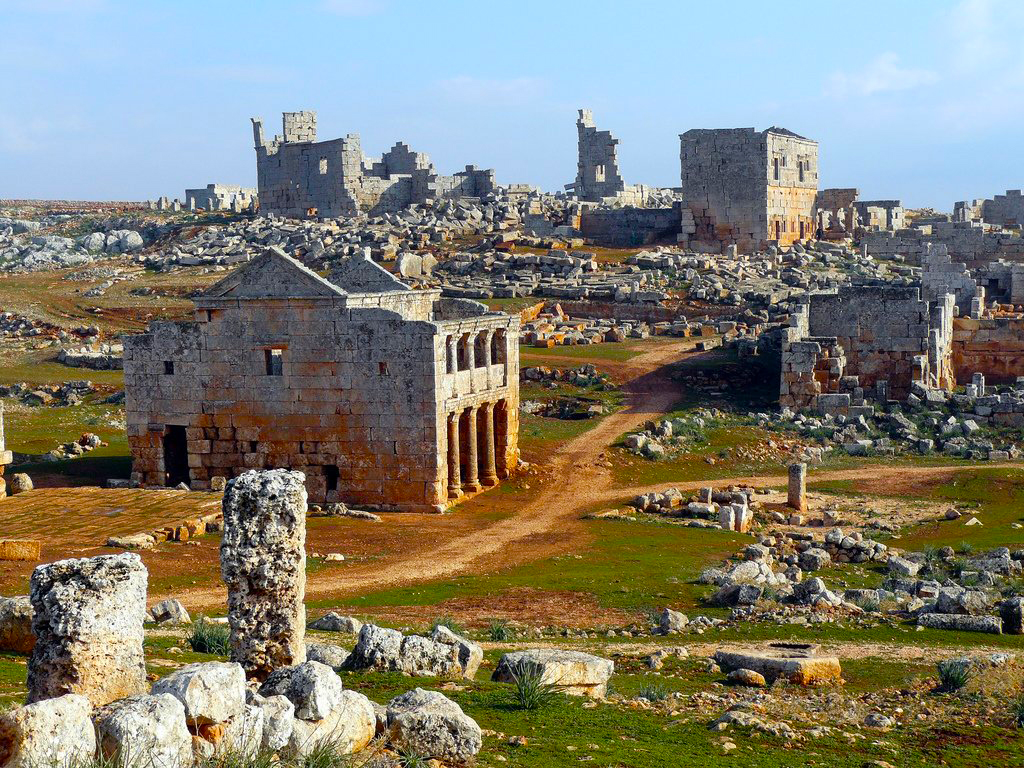Northern Syria Archaeology : Northern Syria is a treasure trove of ancient history, where cities, fortresses, and villages whisper stories of bygone civilizations. Sites like al-Aisa, Qinnasrin, and Qalaat Kaluta showcase a remarkable blend of Roman, Byzantine, and Islamic influences that shaped the region over centuries. For those fascinated by Northern Syria archaeology, these places unveil layers of cultural and architectural evolution that continue to captivate historians and explorers.
From imposing castles to serene rural settlements, Northern Syria archaeology offers a window into the religious, military, and artistic life that once defined the area. Each discovery, whether carved in stone or hidden beneath the soil, adds depth to the understanding of Northern Syria archaeology and highlights the enduring legacy of this remarkable region’s past.
Northern Syria Archaeology | Quick Info.
| Title | Era | Brief Info |
|---|---|---|
| al-Aisa العيسى | Roman to Early Islamic | Important settlement near Qinnasrin with remains from various eras. |
| Qalaat Kaluta قلعة كالوتا | Medieval Islamic | Fortified castle controlling local trade routes and defense points. |
| Qasr al-Banat قصر البنات | Byzantine to Islamic | Ruins of a palace complex, possibly used by local nobility or rulers. |
| Baqirha باقرحا | Byzantine | Village with well-preserved churches and rural architecture. |
| Babisqa بابسقا | Byzantine | Dead City site known for its ancient churches and rural estates. |
al-Aisa العيسى
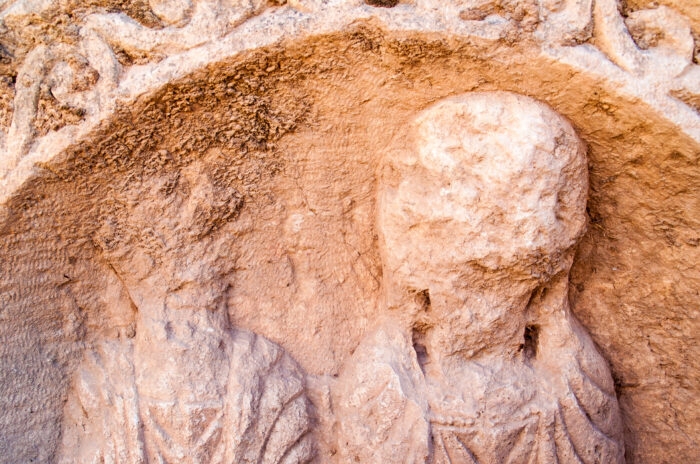
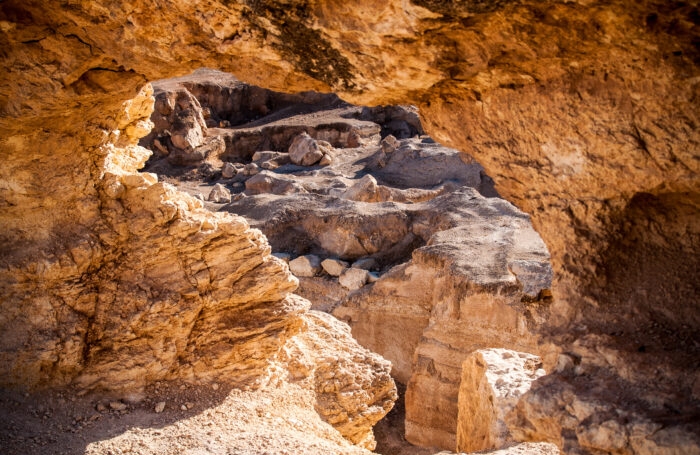
Al-Aisa, known locally as العيسى, sits in proximity to the ancient city of Qinnasrin and forms part of the broader historical landscape of northern Syria. This site’s importance comes from its continuous occupation spanning from the Roman period into the early Islamic era. Archaeological excavations have revealed a settlement with mixed influences, including architectural elements that reflect the cultural transitions in the region. Al-Aisa served as a small but strategic settlement that supported the larger urban centers nearby, acting as a hub for agricultural production and local trade.
Visitors to al-Aisa can explore the remnants of ancient buildings and see traces of early irrigation systems that hint at the community’s adaptability to the semi-arid environment. The layers of history embedded here give scholars insights into how rural populations lived, worked, and integrated into larger political structures over centuries.
Qalaat Kaluta قلعة كالوتا
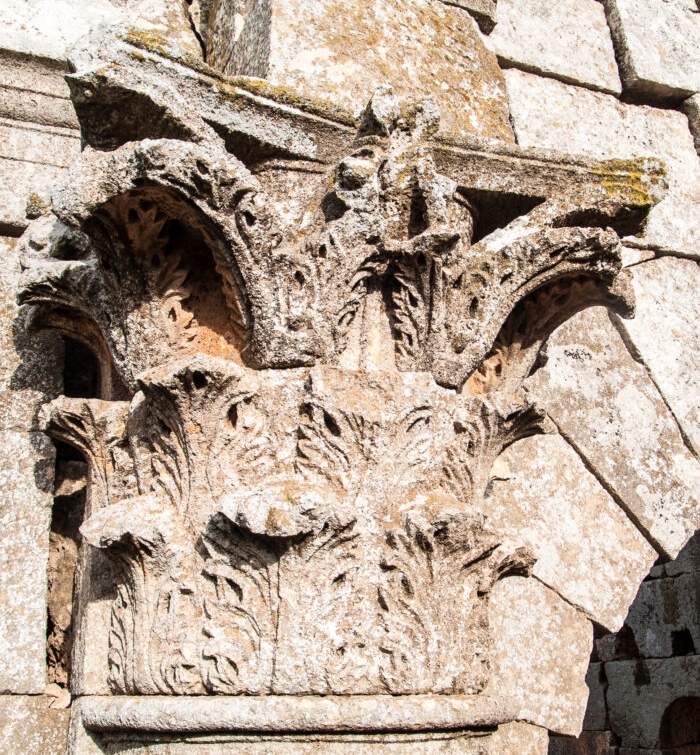
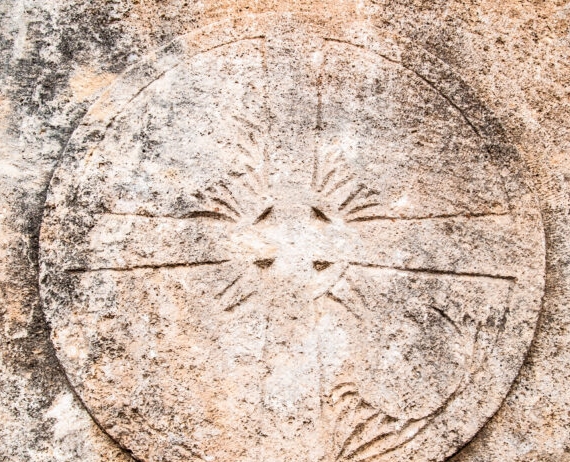
Perched on a commanding hilltop, Qalaat Kaluta (قلعة كالوتا) is a medieval fortress that dominated the surrounding landscape for centuries. Built primarily during the Islamic medieval period, the castle was part of a network of fortifications designed to protect trade routes and local populations from invaders.
The fortress itself exhibits classic defensive features such as thick stone walls, watchtowers, and narrow entrance gates. Archaeological surveys suggest that Qalaat Kaluta was not just a military installation but also supported a small civilian population, including merchants and their families.
Exploring Qalaat Kaluta today, visitors can walk along battlements that offer panoramic views of northern Syria’s rolling hills and valleys. The castle’s strategic location highlights the importance of territorial control in medieval Syria and the enduring legacy of Islamic military architecture in the region.
Qasr al-Banat قصر البنات
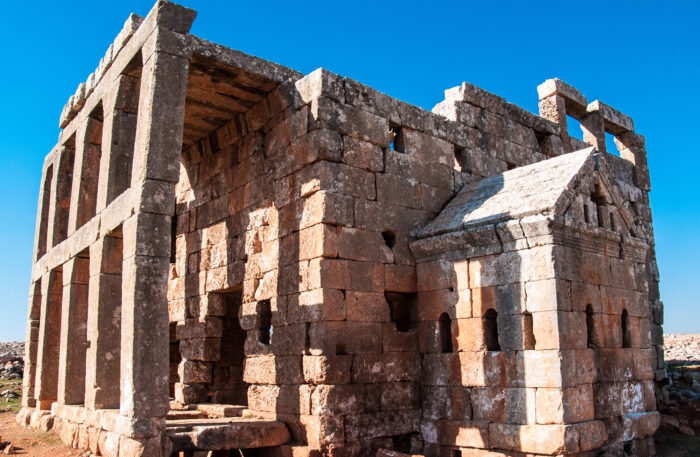
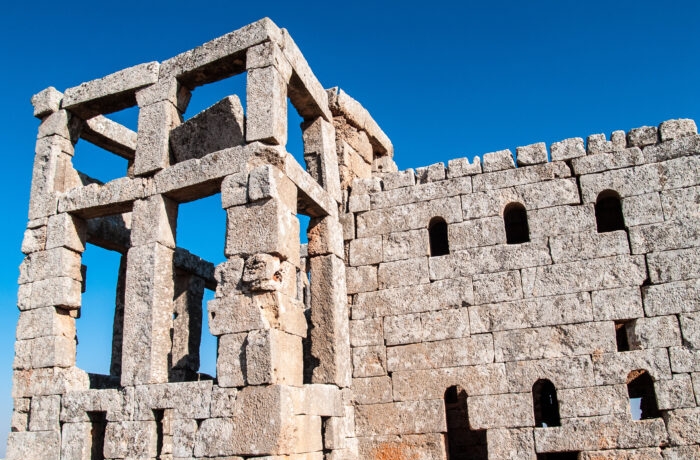
Qasr al-Banat, or “Palace of the Maidens,” is a fascinating archaeological site that captures the imagination with its evocative name and intriguing ruins. Dating back to the Byzantine period and extending into the early Islamic era, Qasr al-Banat was likely a palatial complex used by local nobility or regional rulers.
The site’s architectural remains include intricately carved stonework, large halls, and courtyards, reflecting a blend of Roman and Byzantine design influences. Its strategic position near important roads suggests it played a role not only as a residence but also as a political center that oversaw local administration and trade.
Today, Qasr al-Banat invites visitors to step back into a world of grandeur and power. Its ruins, though weathered by time, still convey the elegance and complexity of Byzantine-era aristocratic life in northern Syria.
Baqirha باقرحا
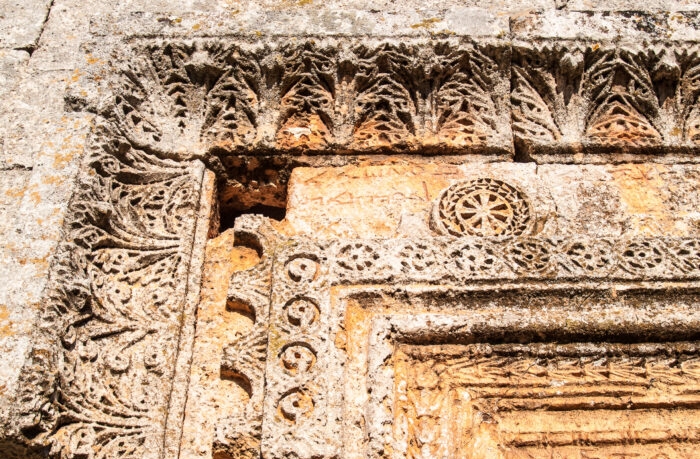
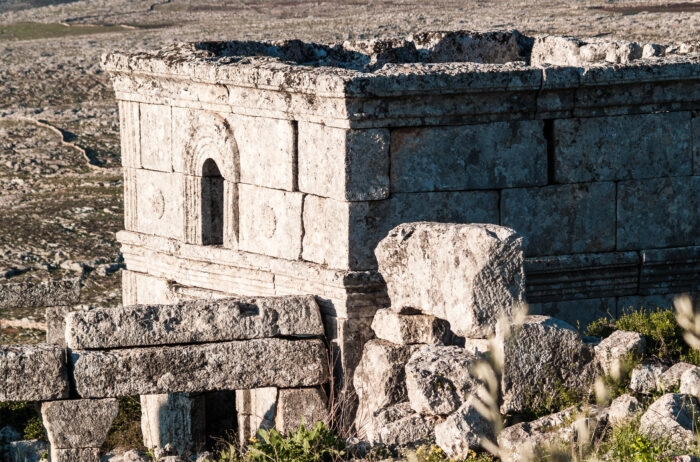
Baqirha (باقرحا) is a quintessential example of a Byzantine rural village that thrived in northern Syria. Known for its well-preserved churches and stone houses, Baqirha provides an intimate look at village life during the Byzantine period.
The site is particularly noted for its religious architecture, featuring churches with beautifully carved facades, intricate mosaics, and baptismal fonts. These religious sites highlight the deep Christian roots of the region before the advent of Islam.
Archaeologists have found evidence of agricultural terraces and olive presses around Baqirha, indicating that the village economy was closely tied to farming and olive oil production. Visitors can stroll through the ruins and imagine the rhythms of daily life that revolved around faith, family, and farming.
Babisqa بابسقا
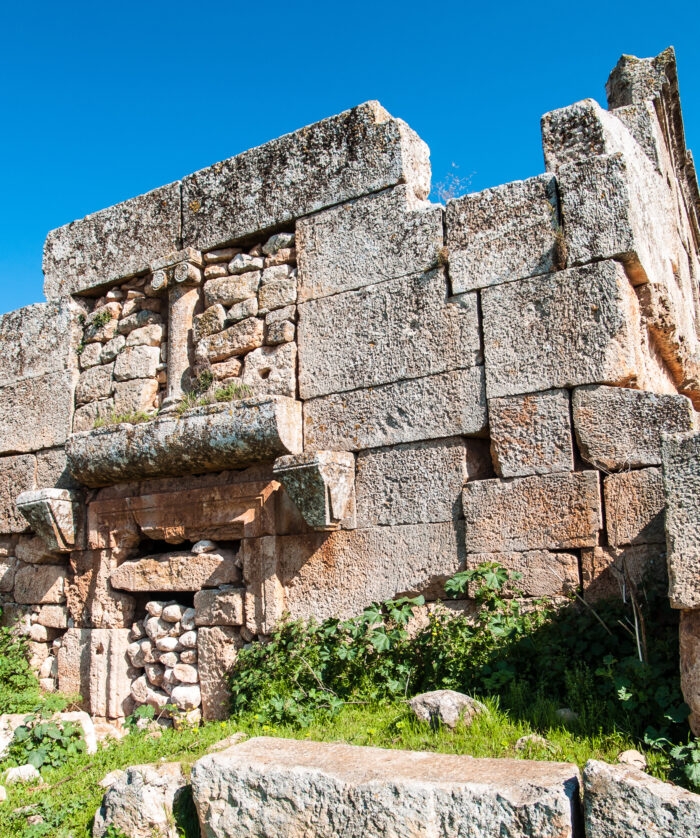
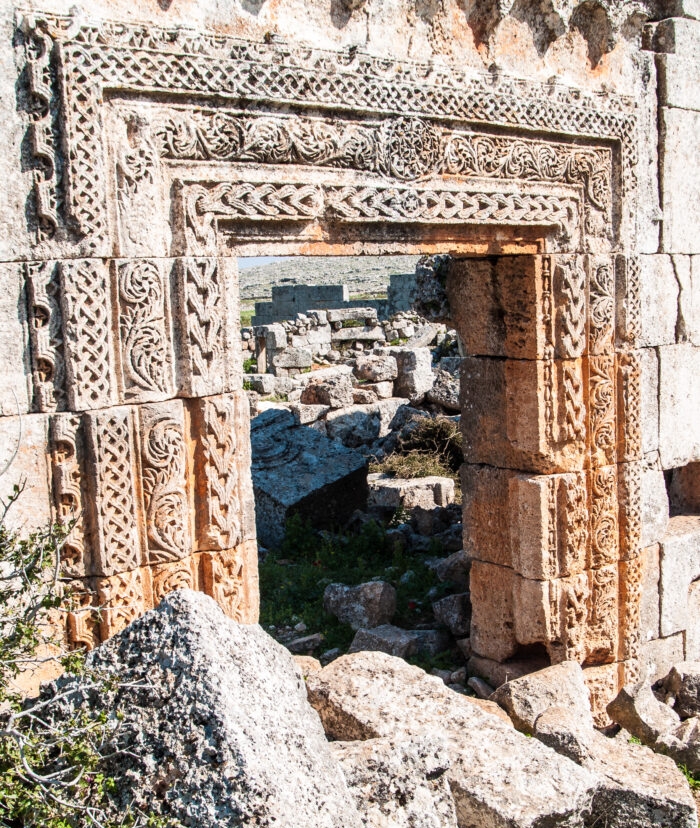
Babisqa is part of the famous “Dead Cities” of northern Syria—an extraordinary collection of abandoned Byzantine villages that are remarkably well preserved. This site is known for its ancient churches, residential buildings, and rural estates that once formed a vibrant community.
The churches at Babisqa stand out for their architectural sophistication, including basilicas with multiple aisles, decorative capitals, and stone carvings. The village also includes agricultural structures like presses and storage facilities that illustrate the integration of economic and religious life.
What makes Babisqa particularly compelling is how well the ruins have resisted the ravages of time, offering visitors a unique window into the Byzantine world’s rural aspects. The site invites historians, archaeologists, and tourists alike to explore the layers of human activity frozen in stone.
Conclusion
The sites of al-Aisa, Qinnasrin, Qalaat Kaluta, Qasr al-Banat, Baqirha, and Babisqa together form a vivid tapestry of Northern Syria archaeology, reflecting the region’s complex blend of civilizations and cultural layers. From bustling cities and formidable fortresses to peaceful villages and sacred shrines, each site reveals a different chapter in the story of a land that once bridged empires and faiths.
For scholars and enthusiasts, Northern Syria archaeology offers invaluable insights into urban design, religious life, military architecture, and the daily rhythms of ancient communities. These landscapes stand as open-air museums, where every ruin and relic deepens our appreciation of Northern Syria archaeology and its global significance.
For travelers, walking through these timeless sites is more than exploration — it’s participation in the living narrative of Northern Syria archaeology, a call to preserve and celebrate a shared heritage that continues to inspire awe and respect.
Finally.. If you have any questions, please contact us. To explore further, visit our Facebook Syria collection for rare images and cultural highlights.
Sources & References:
UNESCO – World Heritage Centre: https://whc.unesco.org
Archnet – Architecture & Heritage Database: https://www.archnet.org
World History Encyclopedia: https://www.worldhistory.org
Syrian Heritage Archive Project: https://syrian-heritage.org
Global Encyclopedia: Wikipedia



